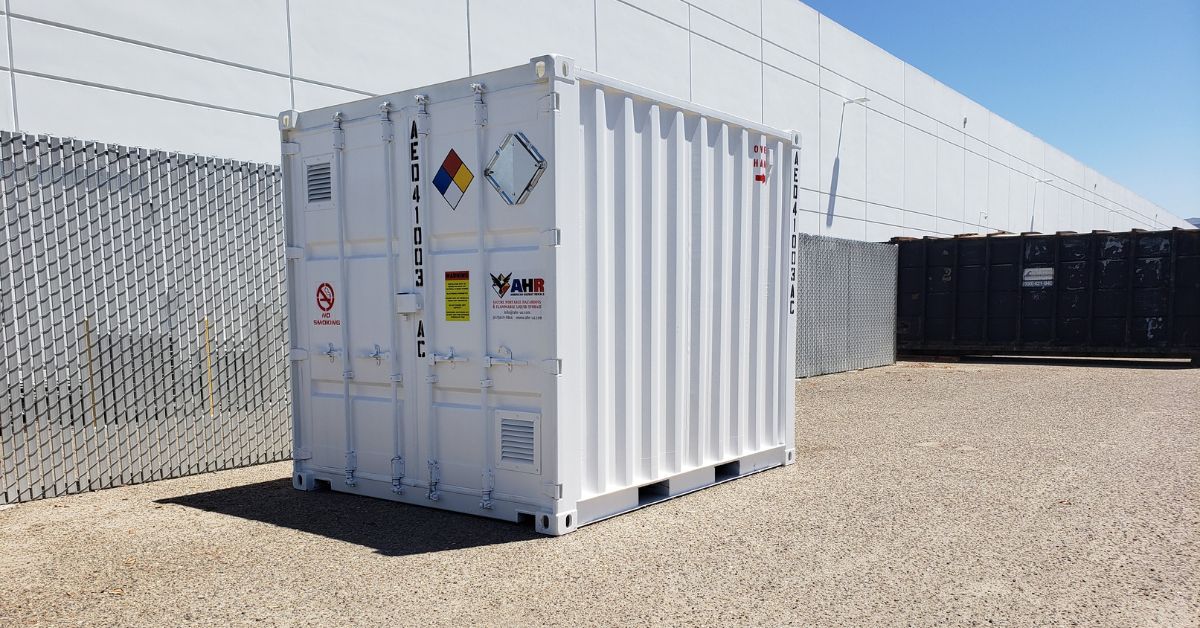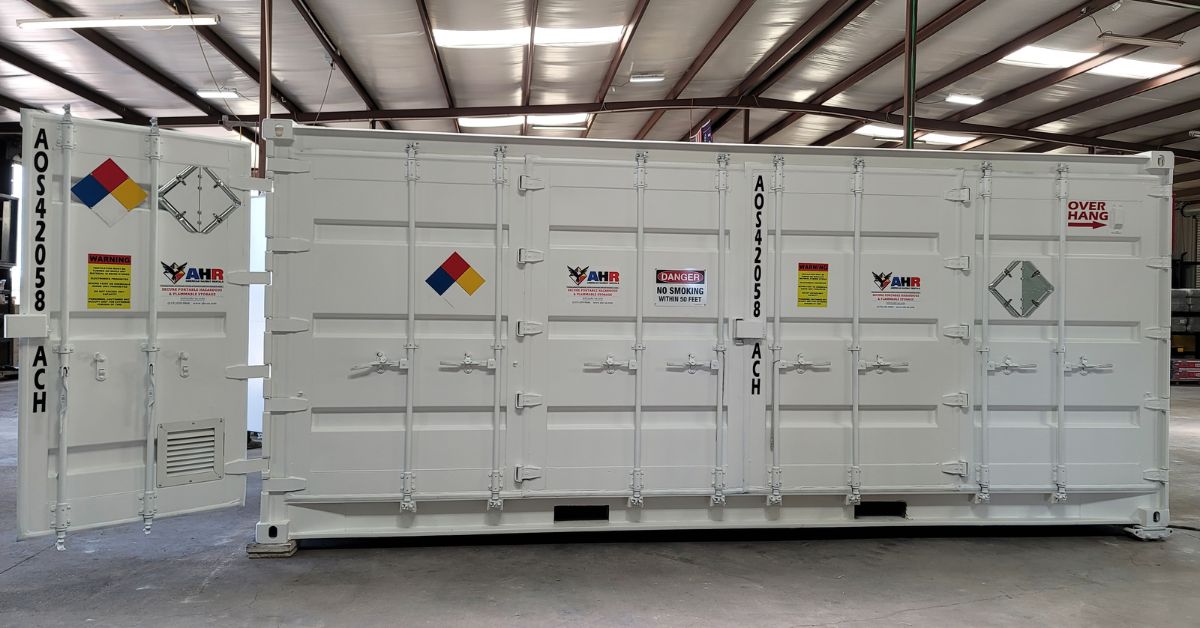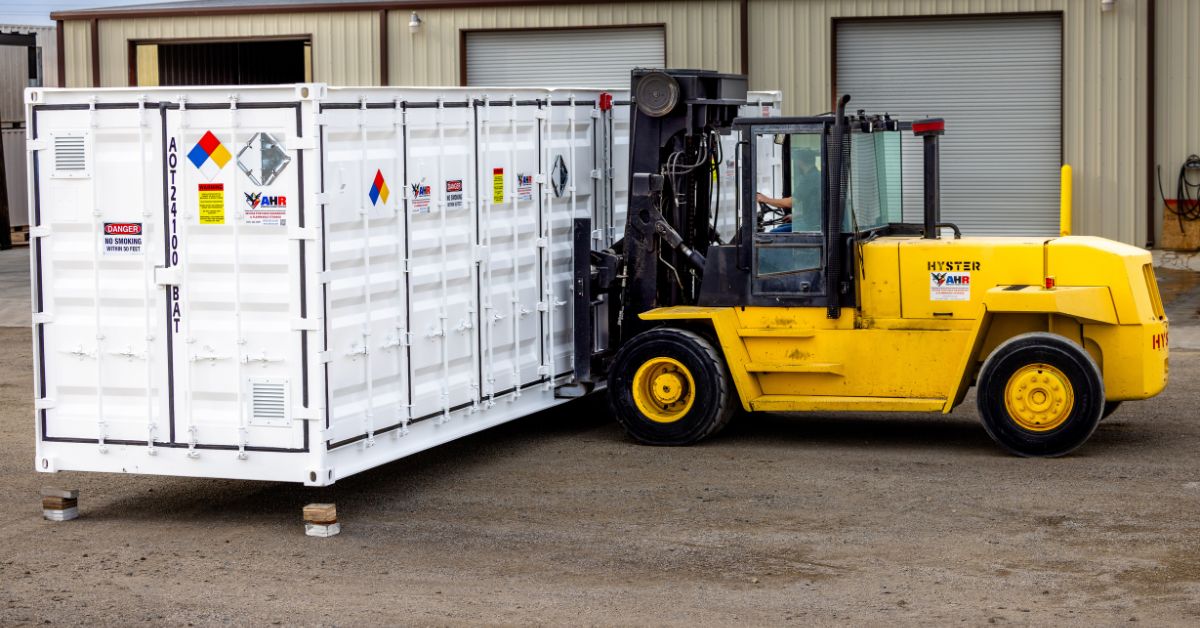
Storing hazardous materials is a matter of public health, environmental protection, and operational safety. But do you know the specifics of how and why we store hazardous materials? In this post, we’ll break down the importance of proper storage, the potential consequences of getting it wrong, and the most effective solutions for keeping hazardous materials secure.
The Dangers of Improper Storage
Many of the substances used daily across various industries are hazardous when handled or stored improperly. Inadequate containment, poor ventilation, and incompatible materials can add stress and danger to a normal workday. Flammable liquids might combust. Corrosive chemicals can eat through containers and injure workers. Even a minor spill could expose nearby employees to harmful vapors or burns.
Environmental Concerns
Beyond the immediate health hazards, improper storage can cause widespread environmental damage. Chemicals that seep into the ground or flow into drains can pollute water sources and take years to remediate. These contaminants may disrupt ecosystems, harm wildlife, and even impact drinking water supplies for surrounding communities. Improper disposal or accidental leaks can also trigger regulatory investigations and legal action, especially when environmental damage affects residential areas or protected habitats.
The Regulatory Framework
Several US federal agencies regulate the storage and handling of hazardous materials. The Occupational Safety and Health Administration (OSHA) oversees workplace safety standards, while the Environmental Protection Agency (EPA) focuses on environmental protection. The Department of Transportation (DOT) regulates the transportation of hazardous materials from one site to another.
Each agency sets forth rules that cover the classification and labeling of materials, storage requirements, fire protection and ventilation, spill prevention and secondary containment, and necessary hazmat training for employees. Failing to comply with these rules can result in fines or even criminal penalties.

What Safe Hazmat Storage Involves
At its core, safe hazardous material storage is about containment, control, and communication. The goal is to keep dangerous substances from escaping or reacting and causing harm. Containment involves using the correct containers and installing secondary containment systems, such as spill pallets or berms, to capture leaks. Control consists of maintaining the proper environment. For instance, some substances require grounding to prevent static discharge. Others must be kept cool and away from sunlight.
Communication plays a quieter but still necessary role. It’s mandatory to label every container with the appropriate hazard symbols, chemical names, and handling instructions. Additionally, safety data sheets (SDS) must be readily accessible, and all employees should receive training on what to do in the event of an emergency.
Common Hazmat Storage Solutions
There is no one-size-fits-all approach to storing hazardous materials. The right solution depends on the type and volume of the material as well as the surrounding environment.
Indoor Cabinets
Fire-rated cabinets are ideal for safely storing small quantities of flammable liquids, corrosives, or toxic substances indoors. These cabinets are often made of steel and include self-closing doors and spill-proof shelves. They have a compact size and reduce the potential for fire or chemical accidents in enclosed areas.
Outdoor Sheds
Outdoor hazmat sheds can store large quantities of hazardous materials away from main structures. These units are typically weatherproof, lockable, and built with durable materials that can withstand the elements. Many have secondary containment systems to catch leaks or spills. These sheds may also include features such as built-in ventilation or shelving to enhance safety and organization. Using outdoor sheds keeps dangerous chemicals isolated from employees and indoor operations, lowering the risk of cross contamination or accidental exposure.
Lockable Steel Containers
For large-scale industrial sites or remote job locations, lockable steel hazmat storage containers provide maximum flexibility and protection. These heavy-duty units meet OSHA and EPA regulations and provide a secure and mobile option for a wide range of hazardous materials. Their portable design allows you to deliver, position, and remove them as needed, making these containers ideal for projects such as construction and disaster response.

Why Rentals Make Sense
Some projects don’t require permanent storage infrastructure, and your needs may not justify the purchase of a container. Sometimes, all you require is a safe, compliant solution for a few months or even several days. In those situations, rental containers offer convenience without sacrificing safety.
Renting hazmat storage units provides several benefits. For instance, you can avoid the upfront investment and maintenance costs of buying or building. Many units come with preinstalled shelving, ventilation, and other safety features. Also importantly, you know your entire project cost when you sign the rental contract.
American Hazmat Rentals provides reliable, fully compliant hazmat storage units you can rent and tailor to meet your specific needs. With delivery, pickup, and support services included, we offer a seamless solution to a critical safety challenge.
Best Practices for Long-Term Safety
Storage equipment is only one part of the equation. The human element is just as vital. You must think about training, inspections, and implementing clear procedures. The top hazmat storage best practices include:
- Regularly check containers for damage, leaks, or expired content.
- Use older materials first to avoid chemical degradation or expiration.
- Keep spill kits and personal protective equipment (PPE) nearby, and prominently display emergency response procedures.
- Train all personnel to handle hazardous materials. Maintain logs of training, inspections, and incidents.
- Only allow trained staff near storage areas.
When you combine these practices with proper containers and infrastructure, the risks associated with hazardous materials decrease dramatically.
Get Safe Hazmat Storage Today
Hazardous materials are an integral part of various operations, ranging from construction to health care. But these materials also have challenges. For example, if you neglect proper storage protocols, the potential consequences are dire, from injury to environmental damage, financial penalties, or worse.
However, once you understand how and why we store hazardous materials, you can do what’s necessary to protect your inventory. Invest in the right tools, train your team, and choose a storage solution that works for your materials. American Hazmat Rentals can provide the dependable equipment and expert guidance you need to stay safe and compliant. From short-term jobsites to long-term storage needs, we offer flexible, regulation-ready solutions that give you peace of mind. Ready to secure your site and safeguard your team? Call American Hazmat Rentals today to discuss hazmat storage options for your operation.